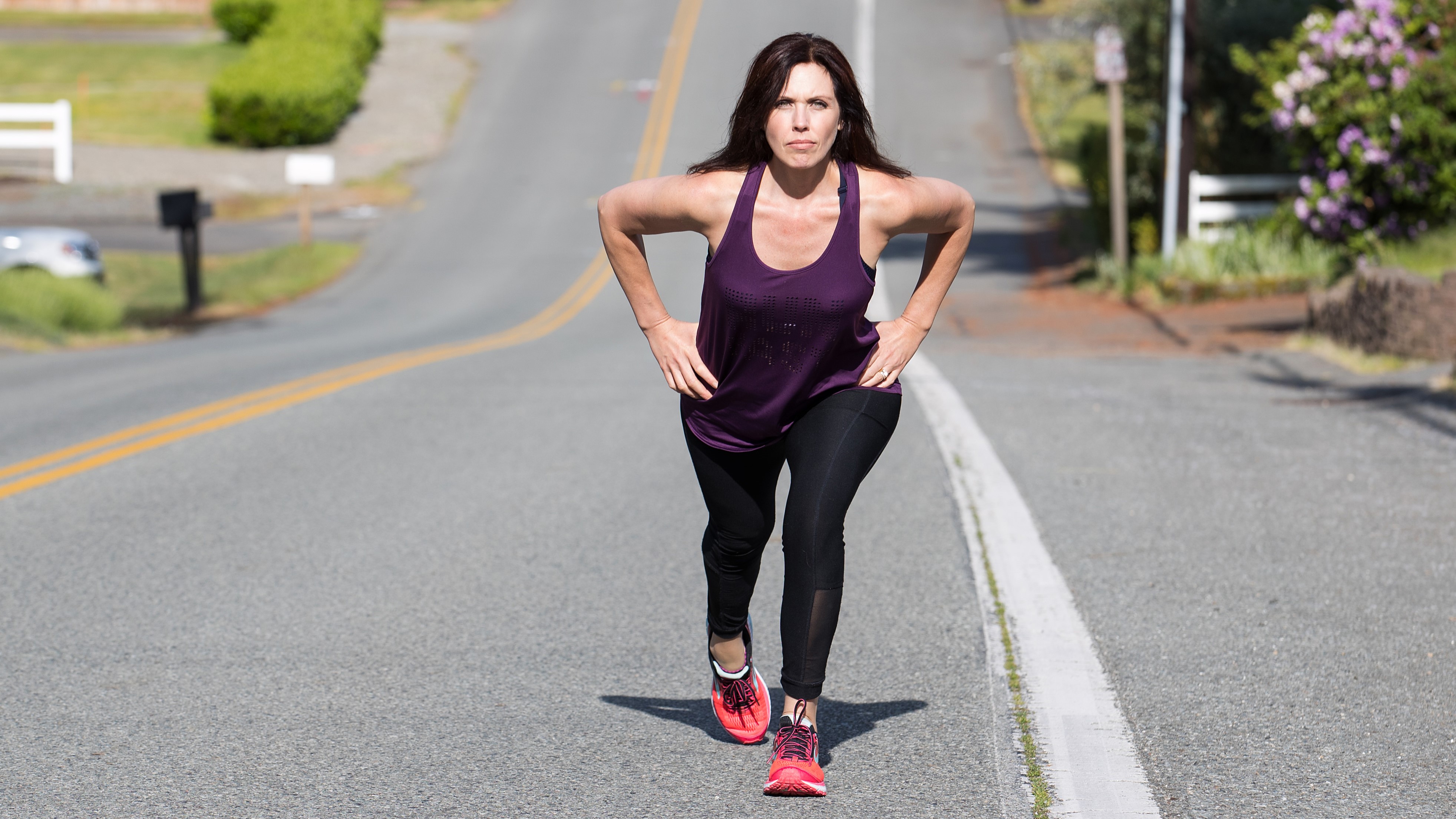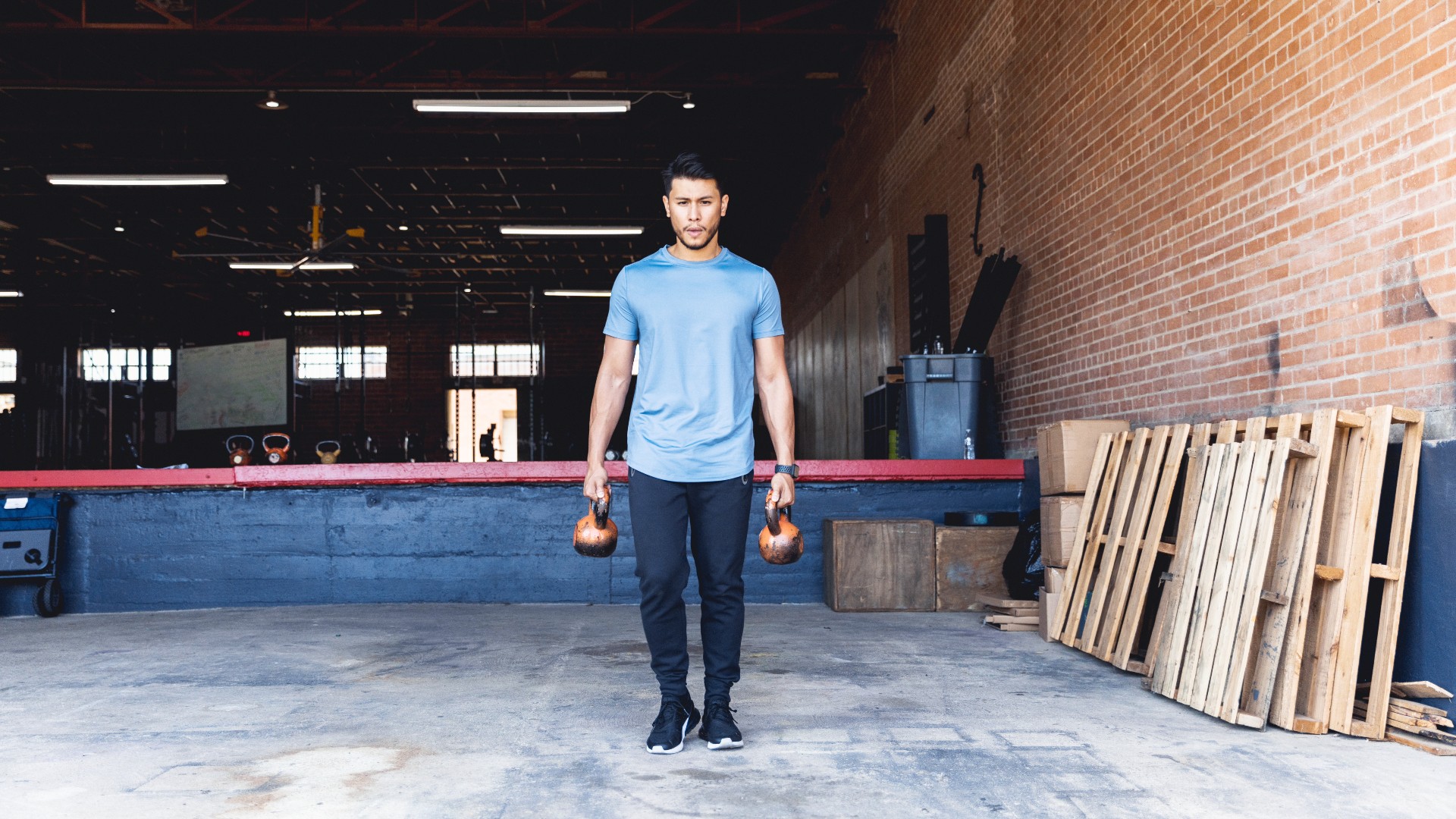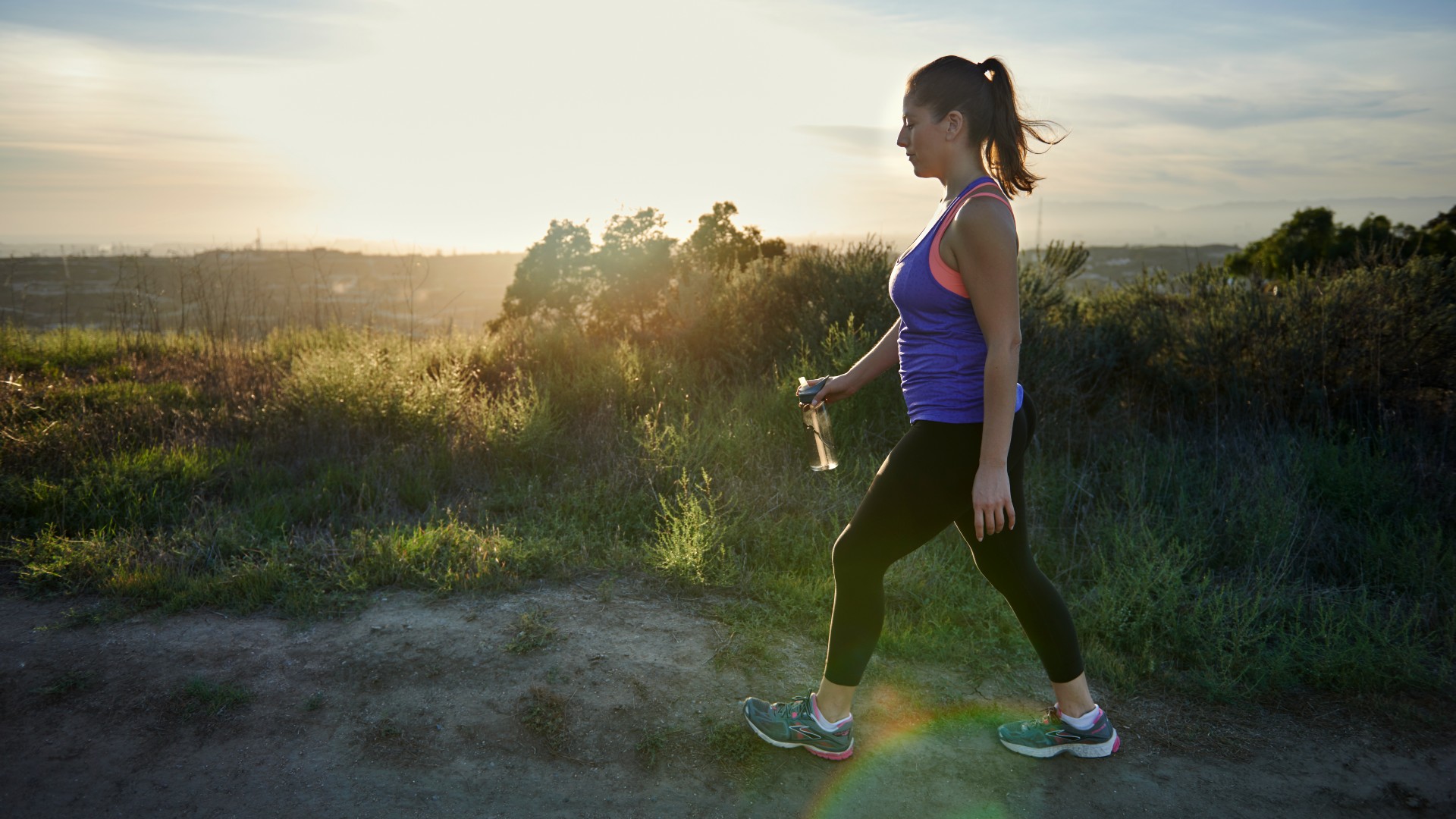
If queues for the treadmills at your local gym are putting a stop to your training plans, and you don’t own one of the best treadmills for workouts — forget them. This three-move walking workout strengthens and sculpts your glutes, legs and abs in under 30 minutes, and you don’t need much gym equipment at all.
The best walking workouts should challenge your cardiovascular fitness, build strength and boost your metabolism, helping to burn more calories. You could choose walking for weight loss, try to increase your daily step count, or opt for the intensity of power walking or hiking.
Whatever your preferred style, this three-move walking workout will torch muscles from head to toe. We recommend picking up a set of weights like dumbbells or kettlebells to compliment the routine but don’t worry, we offer ways to scale if you don’t have access to weights.
What are the 3 strengthening and sculpting walking exercises?
The workout below has been programmed for all levels of fitness, from beginner through to seasoned exercisers. With that in mind, if you can add weights to this walking workout, we recommend doing so. If you are new to exercise or returning from an injury or pregnancy, we strongly advise clearing any untried regimes with a qualified medical professional or trainer first.
Here are the walking exercises.
Incline walk

For this first exercise, find hilly terrain or use a steep incline like a staircase. Walking on an incline emphasizes the muscles in the posterior chain, which means the muscles that run down the back of the body, including the lower back, glutes, hamstrings and calves, plus your hip flexor muscles and core.
Start with your body weight, then hold a set of dumbbells or kettlebells to make the exercise harder. Keep your spine long and chest up, walking with a flat back and neutral spine without leaning too far forward. Engage your glutes and avoid striking too much with your heels. If you work with your body weight, move with speed or slow it down slightly while holding heavy weights. You could also choose filled rucksacks or water bottles if you don’t have weights to hand.
Here’s our favorite staircase workout for more ideas when working with inclines.
Power walk

Power walking simply means walking at a faster pace, usually between 4-5.5 mph/ 7-9km/h. The exercise form requires increased upper-body engagement as you use your arms to propel yourself forward, which means your shoulders, arms and core play a role, and speed ramps up your cardiovascular output — here’s what 30 minutes of power walking can do for your body.
According to Walk the Walk, a breast cancer organization, there are several tips for perfecting your power walk; this includes keeping your arms at 90 degrees and pumping them back and forth, standing tall with good posture to avoid lower back pain and avoiding overstriding by taking smaller steps.
Farmer's walk

We’re no strangers on how to do the farmer’s walk, and we even did the farmer’s walk every day for one week to see what would happen, so we can safely recommend this exercise to those seeking an intense walking workout. Hold a weight in each hand (or you can work single-sided if you prefer), then walk using measured strides. Keep your spine long, chest up and avoid leaning forward, backward, or to one side. Squeeze your stomach muscles and roll your shoulders back and down, setting them in place to prevent hunching. The farmer’s walk is a full-body strength exercise, so try to engage as many muscles as possible while you move.
3-move beginner-friendly walking workout to try
24-minute EMOM (Every Minute On the Minute) x 6 rounds
Minute 1: Incline walk
Minute 2: Power walk
Minute 3: Farmer’s walk
Minute 4: Rest
Start with a warm-up that targets the muscle groups you’re working on, then give this three-move walking workout a go. Start with your incline walk during the first minute, then move into a power walk during the second — you can choose to power walk using an incline and decline or on a flat road — then pick up your weights and switch to the farmer’s walk for the third minute. Rest at the last minute and continue for the given rounds, increasing or decreasing as you like. Set up your space beforehand so that you can switch efficiently between exercises without resting.
Benefits of walking

Taking a stroll (indoors or outdoors) packs many perks. It’s accessible, free and low impact, which helps enormously if you have limited access to equipment. Depending on the intensity and frequency of your walks, you could burn calories (we put running and power walking head-to-head to see which burned more calories, and it’s closer than you think), lose weight and combat the likelihood of developing chronic illnesses like heart disease and diabetes.
Other benefits include building lower body strength, strengthening your joints and bones, building muscle, improving posture and boosting mood and emotional wellbeing. Here’s what 30 minutes of walking per day can do, and despite the adage that 10,000 steps a day are the magic number, you can access benefits from as little as 7,000, according to some research.







